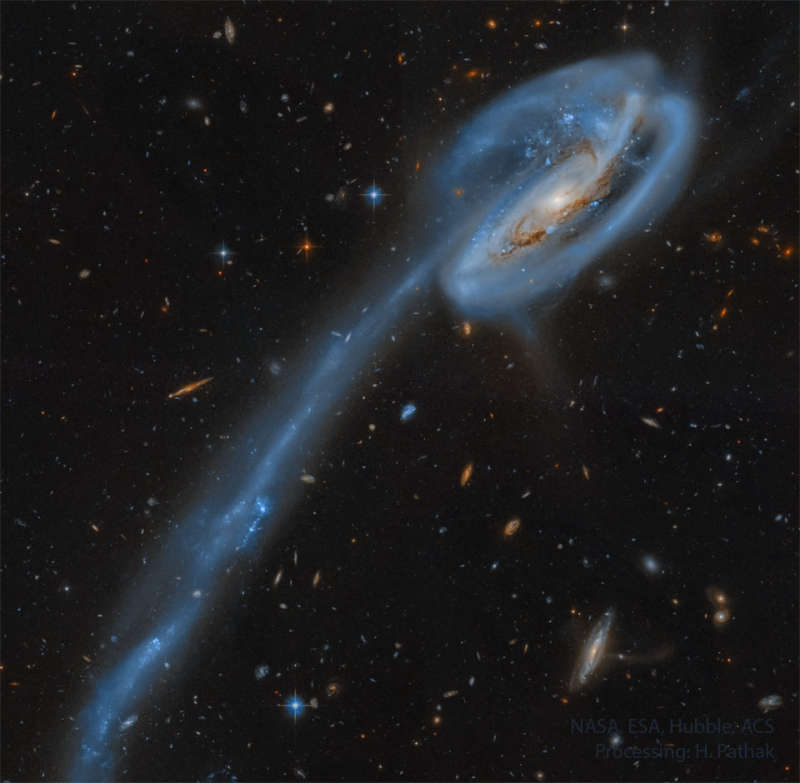APOD: 2024 July 15 Б The Tadpole Galaxy from Hubble

Explanation:
Why does this galaxy have such a long tail?
In this stunning vista, based on image data from the
Hubble Legacy Archive,
distant galaxies form a dramatic backdrop for disrupted spiral
galaxy
Arp 188, the Tadpole Galaxy.
The cosmic tadpole is a mere 420 million light-years distant toward the
northern constellation of the Dragon
(Draco).
Its eye-catching tail is about 280 thousand
light-years long and features massive, bright blue star clusters.
One
story goes
that a more compact intruder galaxy
crossed in front of
Arp 188 -
from right to left in this view - and was
slung around
behind the
Tadpole by their gravitational attraction.
During the
close encounter, tidal forces drew out the
spiral galaxy's stars, gas, and dust
forming the spectacular tail.
The
intruder galaxy itself, estimated to
lie about 300 thousand light-years behind the Tadpole,
can be seen through foreground spiral arms at the upper right.
Following
its terrestrial
namesake, the
Tadpole Galaxy will likely lose
its tail
as it grows older, the tail's star clusters
forming smaller satellites of the large spiral galaxy.
APOD in world languages:
Arabic
(IG),
Bulgarian,
Catalan,
Chinese (Beijing),
Chinese (Taiwan),
Czech,
Dutch,
Farsi,
French,
German,
Hebrew,
Japanese,
Portuguese,
Russian,
Serbian,
Slovenian,
Spanish,
Taiwanese,
Turkish,
and
Ukrainian
Authors & editors:
Robert Nemiroff
(MTU) &
Jerry Bonnell
(USRA)
NASA Web Site Statements, Warnings,
and Disclaimers
NASA Official: Jay Norris.
Specific
rights apply.
A service of:
LHEA at
NASA /
GSFC
& Michigan Tech. U.

